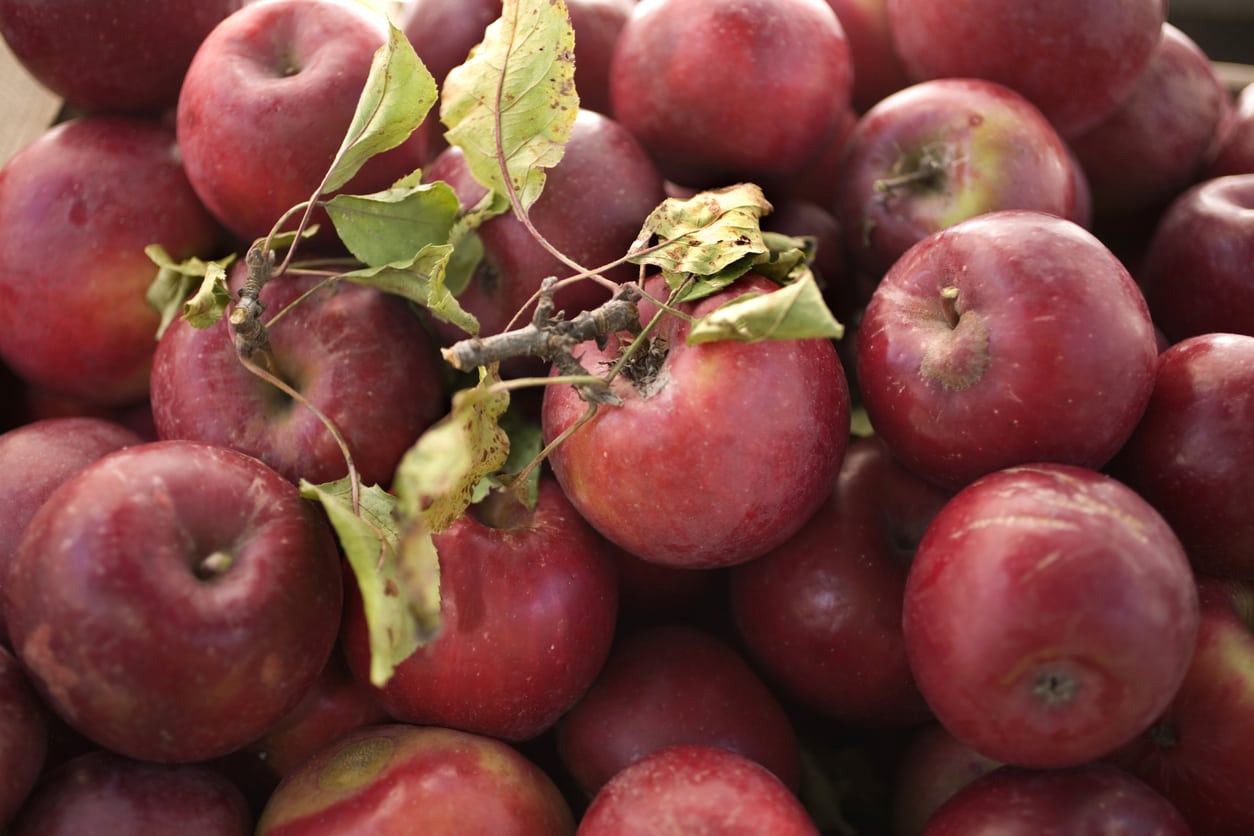Rome Beauty Apple Info – Growing Rome Beauty Apples In The Landscape


Rome Beauty apples are large, attractive, bright red apples with a refreshing flavor that is both sweet and tangy. The flesh ranges from white to creamy white or pale yellow. Although they taste great straight from the tree, Rome Beauties are particularly well suited for baking because they taste great and hold their shape well. Read on to learn about growing Rome Beauty apple trees.
Rome Beauty Apple Info
Introduced in Ohio in 1816, popular Rome Beauty apple trees are widely grown across North America. Rome Beauty trees are available in two sizes. Dwarf trees reach mature heights of 8 to 10 feet (2-3 m.), with a similar spread; and semi-dwarf, which reach heights of 12 to 15 feet (3.5-4.5 m.), also with a similar spread. Although Rome Beauty apple trees are self-pollinating, planting another apple tree in close proximity can increase the size of the harvest. Good pollinators for Rome Beauty include Braeburn, Gala, Honeycrisp, Red Delicious, and Fuji.
How to Grow Rome Beauty Apples
Rome Beauty apples are suitable for growing in USDA plant hardiness zones 4 through 8. The apple trees need six to eight hours of sunlight per day. Plant apple trees in moderately rich, well-drained soil. Avoid rocky soil, clay, or fast-draining sand. If your soil is poor, you may be able to improve conditions by digging in generous amounts of compost, shredded leaves, well-rotted manure, or other organic materials. Dig the material to a depth of at least 12 to 18 inches (31-46 cm.). Water young trees deeply every week to ten days during warm, dry weather by allowing a hose to drip around the root zone for about 30 minutes. Normal rainfall usually provides enough moisture after the first year. Never overwater. It’s best to keep the soil a little on the dry side. Feed the apples trees with a good balanced fertilizer when the tree begins bearing fruit, usually after two to four years. Don’t fertilize at planting time. Never fertilize Rome Beauty apple trees after July; feeding trees late in the season produces tender new growth that is susceptible to damage by frost. Thin excess fruit to ensure healthier, better-tasting fruit. Thinning also prevents breakage caused by the weight of the large apples. Prune apple trees annually after the tree is finished bearing fruit for the year.
Gardening tips, videos, info and more delivered right to your inbox!
Sign up for the Gardening Know How newsletter today and receive a free copy of our e-book "How to Grow Delicious Tomatoes".

A Credentialed Garden Writer, Mary H. Dyer was with Gardening Know How in the very beginning, publishing articles as early as 2007.
-
 Moody Blooms For Spring: 8 Types Of Black Flowers To Add Drama To Spring Displays
Moody Blooms For Spring: 8 Types Of Black Flowers To Add Drama To Spring DisplaysFrom midnight burgundies to inky violets, several types of black flowers can enrich and embolden a spring display. Try these brooding bloomers for a moody garden
By Tonya Barnett
-
 My Homemade Orchid Fertilizer Always Brings More Blooms – Here's The Easy Recipe That Transforms Plants
My Homemade Orchid Fertilizer Always Brings More Blooms – Here's The Easy Recipe That Transforms PlantsScientist-turned-gardener Mary Ellen Ellis shares her tried-and-tested DIY orchid fertilizer recipe, plus more ingredients to try for healthy, happy plants.
By Mary Ellen Ellis